Every now and then, I wonder about how many photo books are produced that most of us never see.
These books could be produced for friends and family. They could be produced just out of curiosity, to test a printer or explore design options. In fact, they could be produced for 1000 reasons other than wide distribution, bookstore sales, global fame, and immortality. But they exist, and they are quietly shared.
Kate Zari Roberts – “Field Notes”
Self-published, 2025
Review by W. Scott Olsen

The audience is always a question. “Who are my photos for?” lingers in the back of our heads every time we take an image. Yes, the easy answer is that we are taking them for ourselves. But photography is not (or should not be) an act of narcissism or solipsism. Photography is an act of generosity, a way of looking at the world, capturing a particular vision of it, and then saying to others, “Look, dear others. This is what I see. Let me share it with you. Isn’t the world a fascinating place?”
Like writers who say they write for “the general audience” (whatever that might be), photographers can say they photograph for “the general viewer.” Yet I would argue this is not fully true. I am not the first to say this, but I believe we photograph (or write) for ourselves as the Other in our best viewing/reading memory. We recall that bliss or insight and seek to create it again.

I would imagine every year there are hundreds, if not thousands, of photo books, of tremendous quality, really excellent work, produced with care, curated, sequenced, the pages fretted over for their color value or tonal range, with an intended audience of the very few. With luck, these intended few will see them. But even this is never assured.
I’m thinking about this today because I have on my desk an extraordinary book by Kate Zari Roberts called Field Notes. When she sent me the book, there was a note on the inside which read: “My intention for this book was just to have something that I could leave with gallery owners—so they wouldn’t have to go online to see my work.”

This strikes me as an extraordinary idea, although perhaps an expensive one for the artist. Kate Zari Roberts’ work has been exhibited in galleries and in museums on three continents. It’s appeared in fine art photography magazines, Home and Garden magazines, and several books on gardening. Gallery owners, though, see a lot of work. Much like walking in the front door with a large art portfolio bag under one arm and a hopeful face, this book of work becomes a gift, work that can stay with the curator, allowing for consideration in quiet and peace.
First impressions count, and the cover of Field Notes is striking. What appears to be wheat, in a type of bas-relief, the look of an embossed copper plate, parts, and swirls. There are blue and gold tones, a bright center, and one stem heading off in a different direction. There is a Van Gogh, Starry Night vibe here. In other words, the opening image is both familiar and unusual. And beautiful.
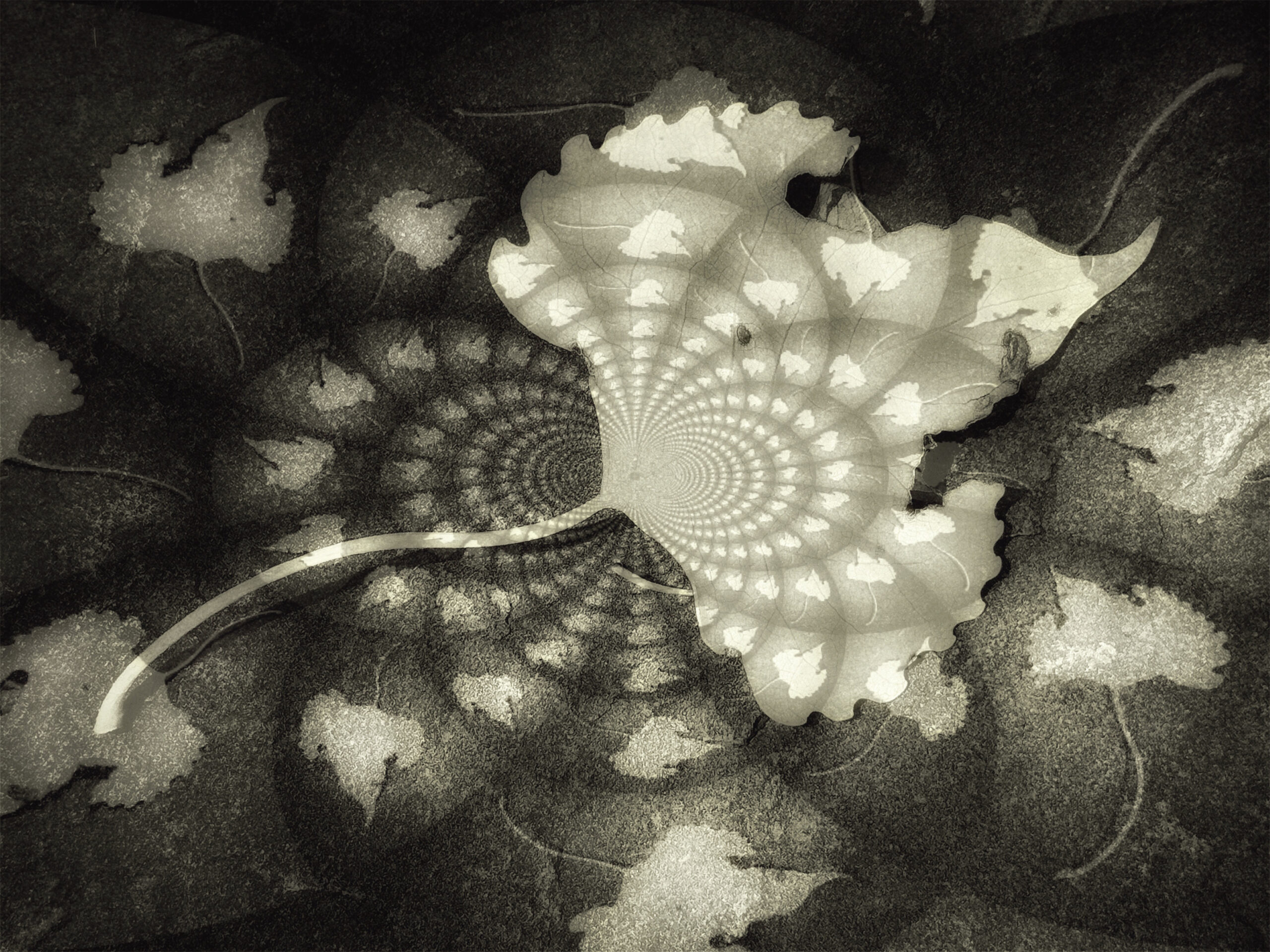
Open the book to any page, and what you see are plants, flowers, waterscapes, all of them deeply enhanced and re-visioned by the post-production talents of the artist to reveal new textures and colors. I’m not talking about super-saturating a scene so that it becomes cloying, but a fresh understanding of color and shape. While the images are recognizable, they are also complete interpretations of the natural world.
Whether it be daisies up close, or a pond at some distance, frost and snow, or the heat of summer, each of these images is the kind of image where you stop and inhale and say to yourself, “I have never thought it could look like this.”
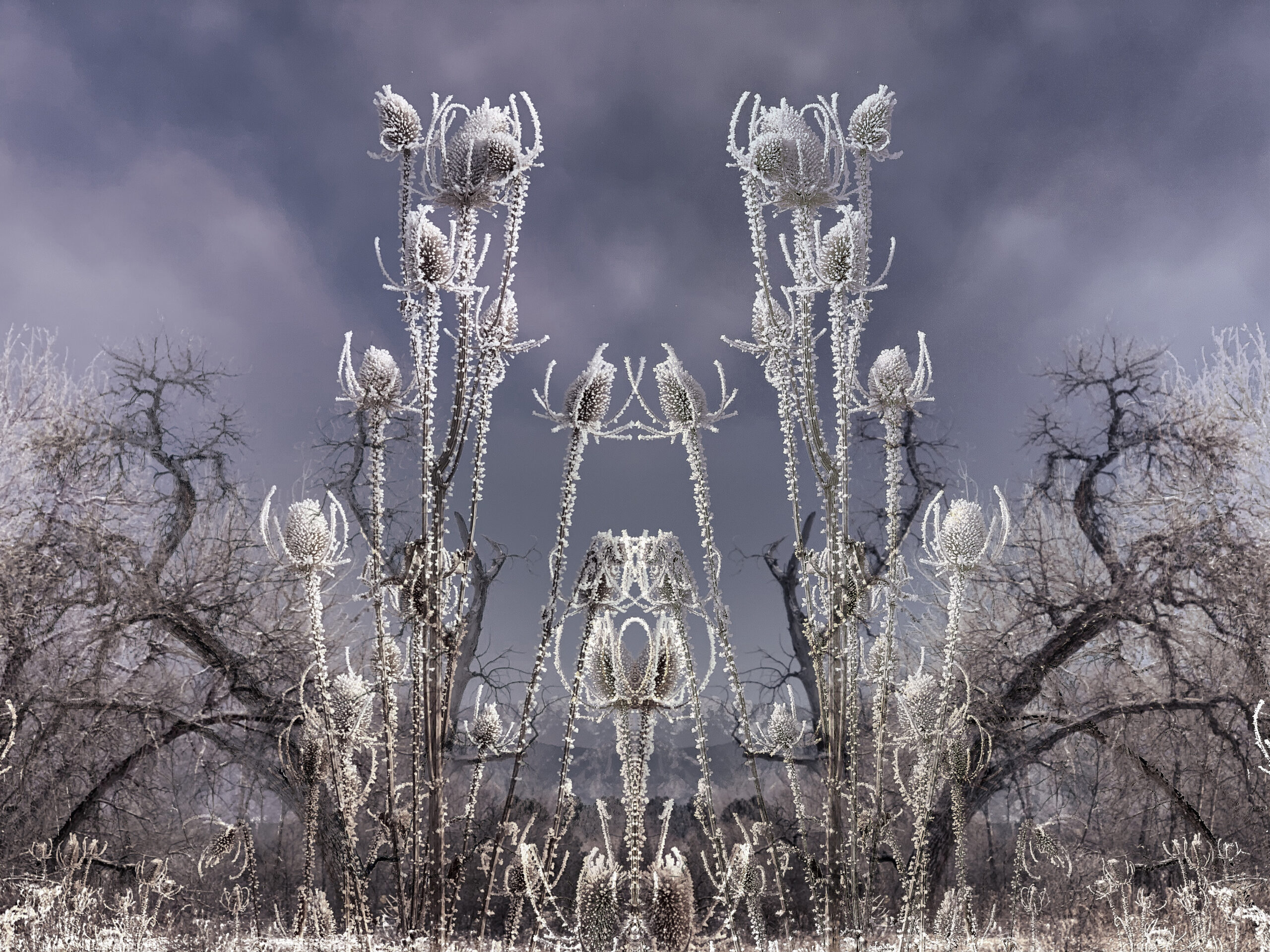
In her one-page introduction to the book, Roberts writes, “Synesthesia is integral to my work and arises in unexpected moments. I see nature through my ears or hear through my eyes. These images can be heard as they speak to the inner, inner contemplative aspect of our own nature. Personally, they are self-portraits and have been beneficial in revealing the longing within to connect with the divine. The work always precedes my understanding of it, and there is no intention beforehand.”
I read the introduction after I looked at the images. Yes, I thought.
Looking at these photographs, I believe what drives the feeling is a sense of longing to connect with the divine. There is something beautiful, if not sublime, in every composition.
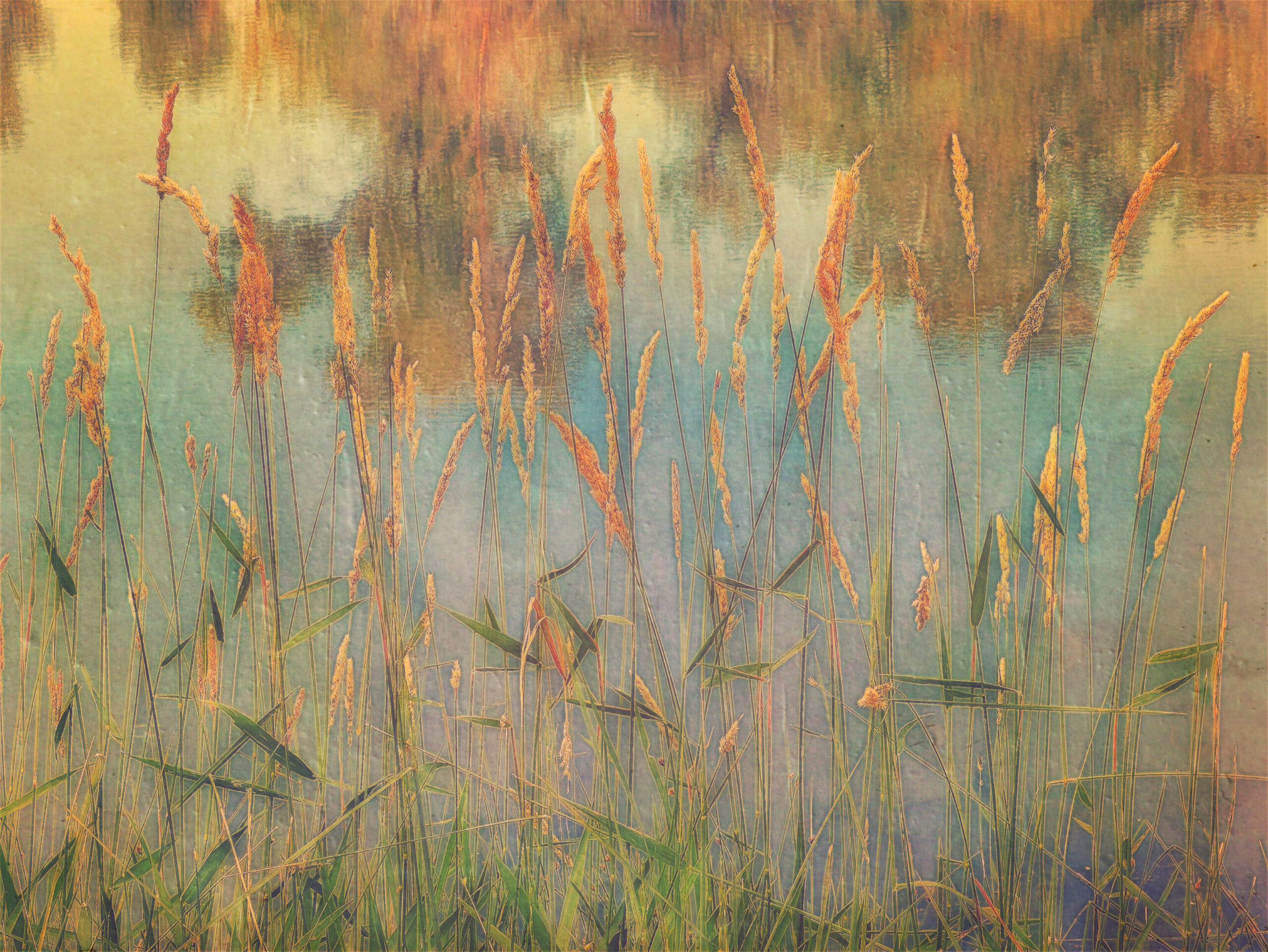
Roberts says this book is for gallery owners, a portfolio to hand them, I assume, to begin or continue a conversation about a potential future show. But that well-defined sense of audience and purpose does not exclude others. If you have any interest in landscapes or flowers, whether it be thistles, cacti, black eyed Susans, clematis, milkweed, or sunflowers, you will want this book. If you have no interest in flowers and plants at all, but simply appreciate insightful, creative interpretations of the natural world, you will want this book.
There is an invitation in the back to contact Zate Zari Roberts by email for orders. kazarob@gmail.com. You will be happy if you do.
A note from FRAMES: Please let us know if you have an upcoming or recently published photography book.



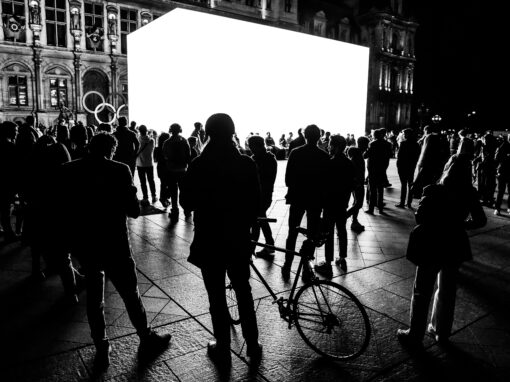
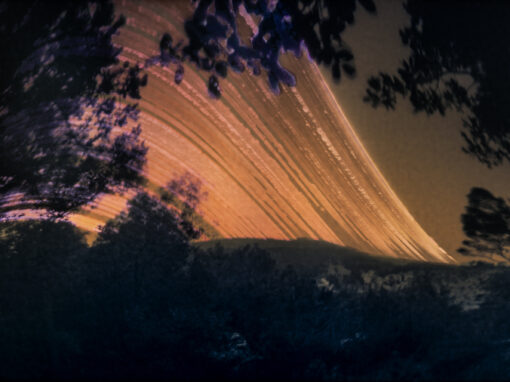
Shameem Ali
November 18, 2025 at 07:44
I joined FRAMES recently and this is the first article I have read, attracted by the cover image! The images here forces you to pause and ponder. They are captivating. It’s like being in an artist’s den. Thank you……wow.